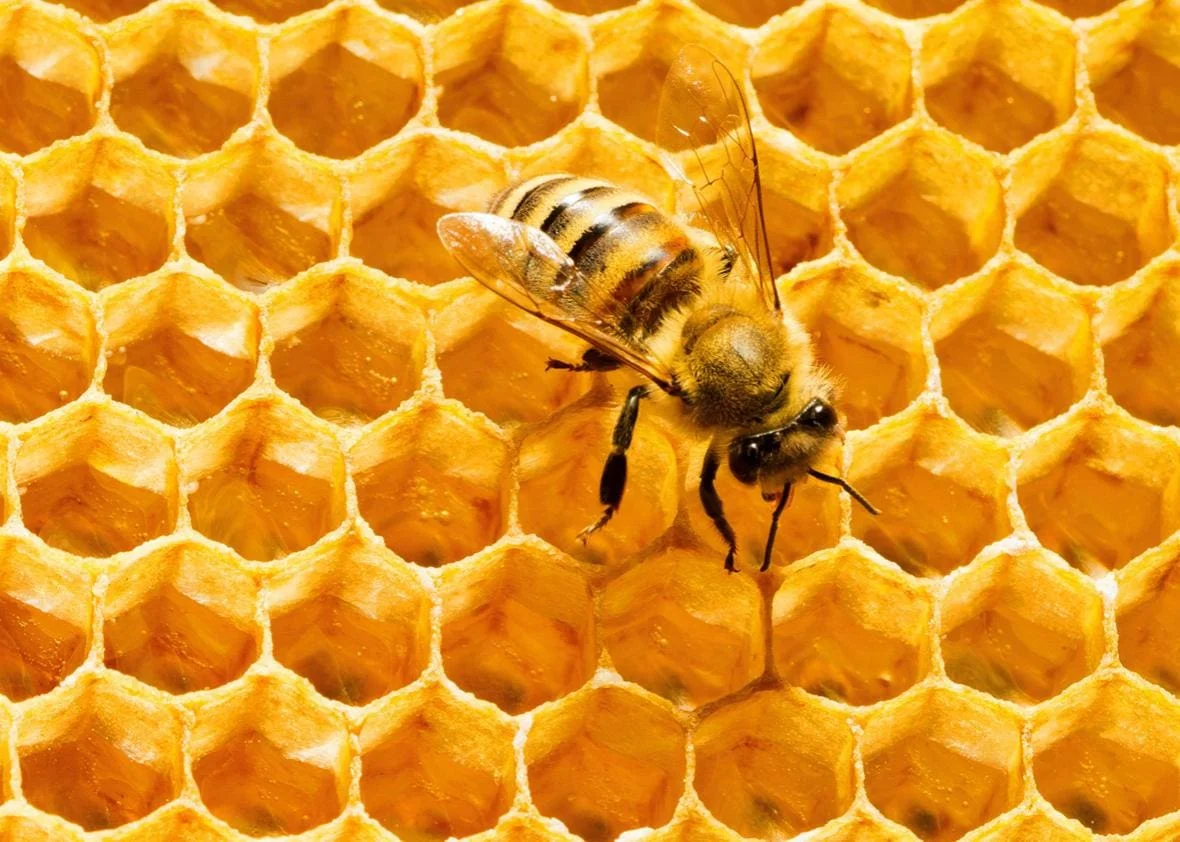If you have ever wandered around in nature, you may have noticed the many geometric shapes. For example, take some of the unconventional snail shell spirals. Or the body of the starfish. These are all designs that we rarely see in the human world. We haven’t even mentioned the symmetry of a flower’s petals.
Hexagons are some of the most common shapes in nature. And while animals cannot do math, we can. And thanks to math, we can come to the conclusion that hexagon is the most efficient shape in nature, and in the world. But how do animals know this?
We cannot say that, but we can do the math to prove the efficiency of hexagon shape. Hexagonal shape leaves no wasted space, and best fills any space you put it.
The perfect example is the honeycomb, and we start off from there.
The Honeycomb
Honeycombs are structures made from the wax secreted by bees. Their purpose is to store honey, pollen, and larvae. For thousands of years, we have admired the hexagonal structure of the honeycomb.
But this structure has been used hundreds of years ago. For example, there are many hexagonal hidden chambers in the dome of the Pantheon in Rome.
Today, the honeycomb and hexagon structure finds usage in engineering and scientific applications. Most notably, in the aerospace industry.
![]()
Why do honeycombs come in a hexagonal shape? Some experts believe that bees possess a divine sense of symmetry. Charles Darwin, for example, described the honeycomb as a masterpiece of engineering. He said, “It is absolutely perfect in economizing labor and wax”.
The hexagon tiles the plane with minimal boundary. The optimal way to cover a large region with shapes of the same area while minimalizing the boundary is to use hexagonal structure.
The Math of it All
Hales used mathematical tools to prove the Honeycomb Conjecture. And then came the Kepler’s Conjecture. This conjecture, known also as the cannonball problem, asks whether the traditional pattern used to stack oranges (cannonballs) is optimal.
Specifically, it asks if the arrangement of equal-sized spheres to fill a space with the minimum amount of wasted volume is the so-called close packing. It consists of spheres whose centers form a hexagonal lattice.
![]()
The experiments suggest that the density filled with balls is roughly 65%. With hexagonal close-packing arrangement, you can get up to 74% density.
Mathematical Equation
Hexagon is the closest regular polygon to a circle that can tessellate a plane. What does that mean? It means there is no empty space between the cells. And this statement is fairly easy to prove.
We start with the angle at each corner for a regular n-sided polygon at a=180-360/n. When you tessellate a plane with these objects, you put the polygons around one corner so that they evenly divide the full circle, or 360 degrees. As a result, around one corner, you have m=360/a polygons meeting.
The full equation is the following:
m = 360/a
= 360/(180-360/n)
= 360/((n*180)/n-360/n)
= 360/((n*180-360)/n)
= n*360/(n*180-360)
= n*2/(n-2)
The equation shows that for n-sided polygons you have n*2(n-2) polygons around one corner. For this to work, this needs to be a whole number.
Sacred Geometry
In the past several years, we’ve seen the rise of sacred geometry. Believers in it ascribe power and significance to naturally occurring shapes. These people see the shapes as evidence of organization by a higher power.
Without going into the controversy theory of it all, we can mention that there is a small group of followers obsessed with hexagons.
The group even has their “Hexagonal Awareness Month”. They consider it the most sacred time of the hexagonal year, uniting all mankind in peaceful contemplation of the hexagonal mysteries.
Now, take away the conspiracy theory, and go back to geometry. Hexagons are startlingly omnipresent in nature. They are always awe-inspiring.
Here are some examples of hexagon shapes in nature. For example, on Saturn’s north pole there is an enduring cloud formation. It is a distinct hexagon, and each of the hexagon’s six sides is bigger than the Earth’s own diameter. It remains a mystery, despite scientists trying to explain it.
The honeycomb is another example we mentioned previously. It is a geometrically perfect home for bees and their honey. Go further, and the hexagon is written into their eyes.
Last, but not least, we have to point to the skeletal formula. We represent organic compounds with hexagons. Most organic compounds have carbon backbones. Why? Because carbon is superabundant and bonds well with other elements.
Speaking of that bond, when one carbon atom bonds with another carbon atom, the bond angle is less than 120 degrees. But when six carbon atoms bond, the bond angle is an even 120 degrees. Six bonded carbons make a perfect hexagon, known nowadays as the benzene ring.



